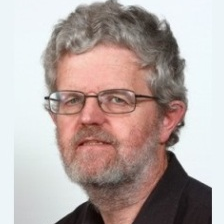Approaches towards Quantum Foundations
A special issue of Universe (ISSN 2218-1997). This special issue belongs to the section "Foundations of Quantum Mechanics and Quantum Gravity".
Deadline for manuscript submissions: closed (31 October 2023) | Viewed by 5031
Special Issue Editors
Interests: foundations of science; interpretation and foundation of quantum mechanics; philosophical foundation of statistics; communication between scientists; machine learning; applied science
Special Issue Information
Dear Colleagues,
Richard Feynman has emphasized the difficulty of understanding quantum mechanics. However, in the last decade, several approaches towards such an understanding have appeared.
Many different meanings can be given to the term ‘understand’. One goal might be to arrive at an understanding which can be explained to scientists outside the quantum community. It may seem that ordinary Hilbert space formalism is not the most useful point of departure here.
Quantum foundation is an important topic. It is a fact that many mutually excluding interpretations of quantum theory exist. In our opinion, before we can start a serious ‘final’ discussion on interpretation, it is important that we first try to agree on the question of foundation.
A Special Issue of the journal Universe with the title ‘Approaches towards Quantum Foundations’, where these problems will be explored, is now being planned.
We hereby invite researchers to contribute to this Special Issue by writing articles on their own approaches towards quantum foundation or their views on this topic. Their reasoning must be underpinned by the necessary mathematics, or to a reference where the mathematics can be found.
One special problem that may be of relevance is to ‘understand’ the results of the Bell experiments, which have now been performed in a complexly loophole-free manner.
Prof. Dr. Inge Svein Helland
Prof. Dr. Jim Al-Khalili
Guest Editors
Manuscript Submission Information
Manuscripts should be submitted online at www.mdpi.com by registering and logging in to this website. Once you are registered, click here to go to the submission form. Manuscripts can be submitted until the deadline. All submissions that pass pre-check are peer-reviewed. Accepted papers will be published continuously in the journal (as soon as accepted) and will be listed together on the special issue website. Research articles, review articles as well as short communications are invited. For planned papers, a title and short abstract (about 100 words) can be sent to the Editorial Office for announcement on this website.
Submitted manuscripts should not have been published previously, nor be under consideration for publication elsewhere (except conference proceedings papers). All manuscripts are thoroughly refereed through a single-blind peer-review process. A guide for authors and other relevant information for submission of manuscripts is available on the Instructions for Authors page. Universe is an international peer-reviewed open access monthly journal published by MDPI.
Please visit the Instructions for Authors page before submitting a manuscript. Submitted papers should be well formatted and use good English. Authors may use MDPI's English editing service prior to publication or during author revisions.
Keywords
- bell experiments
- foundation
- Hilbert space formalism
- mathematical models
- physical axioms
- quantum mechanics
- simplicity






